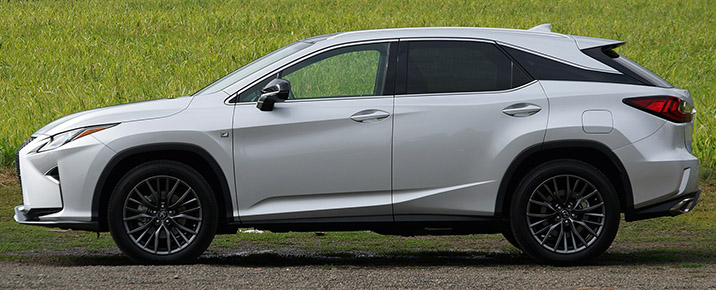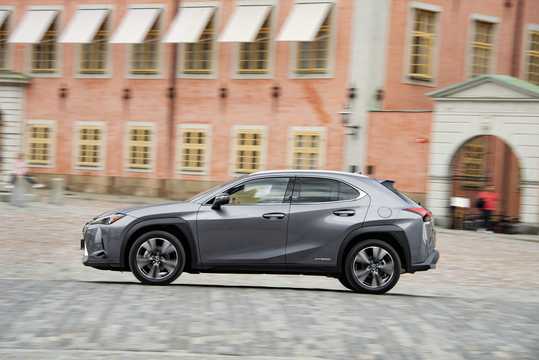I agree with you. Now that I put all the pieces in place it's by time of the previous LS460 big refresh that they have given up on RWD completely. They just wanted to buy some time and did not want to invest big money into RWD anymore. So instead of making two LS models now they just have to make one (current one) and to spice things up I even believe there was a big battle within the board if new LS should even be made at all. What gives it away is that 3.5TT stopgap engine. 5LS is like 4GS a swan song before an actual good bye, not saying they will drop LS badge but it will not be the LS we know in the future. From 2013 Lexus knows they cannot compete in RWD segment anymore as they don't have the engines and cool gimmick technology for marketing purposes to keep with the fierce German competition so they are on standby waiting for a market reset in form of BEV or PHEV or something. Unfortunately Lexus never got to be completely independent from Toyota and that's how they've ended up in this mess in the first place, they are lucky SUVs took off so any kind of thrash SUV will sell no matter what.
I agree. The one that throws me for a loop is the development and existence of GA-L & GA-N, but I think those platforms were designed before Toyota realized a market shift to FWD/electric. I will explain.
My sense is that GA-N and GA-L probably started development in ~2013, well before battery and electric tech became so prevalent. At that time, it would have certainly seemed that Lexus would need a next generation RWD architecture, and knowing that TNGA was coming, it would make sense to think of GA-L/GA-N as the Lexus RWD equivalent of the FWD TNGA platforms.
As electrification grew in popularity, SUVs started to overtake passenger cars in sales, and possibly seeing some powertrain/development delays and realizing they would not be able to fully compete with new premium/higher performance offerings from BMW, Mercedes and BMW, I think Toyota started to realize a new vision for Lexus that was different from what we knew before: A future where everything short of the flagships would be platform engineered Toyota products... both because of advancements realized through TNGA ("FWD is now good/stiff/flexible/capable enough") and cost sharing. Lexus used to have a lot more freedom, but that was reigned in after projects like the GS, IS and RC never quite lived up to their promises.
Considering the advancements made with TNGA, specifically GA-K, and seeing a shrinking market for traditional RWD sedans, Lexus makes the decision in ~2016 to retire the GS and position the next gen ES as the de facto Lexus midsize sedan. This explains the lack of AWD on the ES (GS was cancelled too late to engineer ES for AWD in time for launch), and something like an ES F-Sport model is an easy late addition to appeal to some disenfranchised GS buyers. Crown moves forward with GA-N as planned because it's a prestige/nostalgia play in Japan.
Shortly after, probably 2017, the work that was done on the GS is repurposed to become the Mirai. The IS continues to underperform, the market for RWD sedans continues to shrink, so the late-term decision is made to can a GA-N IS and move forward with a heavy refresh. This would explain some of the Best Car/MagX renders showing the side flanks looking 95% the same but with updated front and rear ends.
At this point (2017) with a fading future for RWD, almost all R&D resources are dedicated towards TNGA FWD platforms (new engines, hybrids, 2.5L PHEV, dynamic torque vectoring AWD, in-wheel electric motors), electrification/batteries, and TNGA-F to prepare for the next gen BOF lineups. This probably also explains why the LF-1 is taking so long to come to market... it is riding on what is seen internally as a niche platform that's going to need a new AWD system and further development to be adapted for an SUV. Meanwhile, Toyota is churning out new GA-K models and SUVs every 6 months.
2019 comes and we start getting rumors about Mazda collaboration for RWD vehicles. Now, Toyota has probably closed future development of their own RWD programs but since Akio has a soft spot for sports cars, Toyota says, "You know... sure. We can give it a shot. Maybe we can resurrect the RC or something... and if we do that, we might as well spin off an IS." But the reality there is probably TBD, and heavily dependent on what's happening in the market right now, which doesn't look good. Whatever is developed for ~2025 will need to be somewhat electric, if not fully electric. Mazda, of all companies, is going to come to the table with a RWD electric platform that Toyota refuses to build? I will be very interested to see how this turns out, if anything even comes of it.
It's now 2020 and the reality of everything above starts to hit: GS is cancelled, IS will see a heavy aesthetic (third) refresh with carryover ancient powertrains, LF-1 is nowhere in sight, LS needs additional investment to be competitive, LC F seems to have evaporated... but FWD GA-K, Toyota-based products have never looked better: rumors about amazing 2NX are rampant, ES will be refreshed this fall, and everyone is starting to think about the next gen RX. Toyota is introducing two all-new hybrid models
next week alone and this is after just seeing the RAV4 Prime/TRD Off Road, Highlander, Yaris Cross and Harrier just over the last 6 months.
TL;DR: I think the development of GA-L and GA-N are probably seen internally as wasted resources, and most likely errors, especially with such low sales of LS and LC. They were created before the era of electrification and SUV dominance but pushed forward because those projects were already so badly delayed, and I can guarantee that if Toyota had it to do over again, they would not have invested the money in them. It is for that reason that I do not think they have a long life into the future. New premium RWD architecture for slow selling LS and LC, niche Mirai and Crown? Likely impossible to justify.






